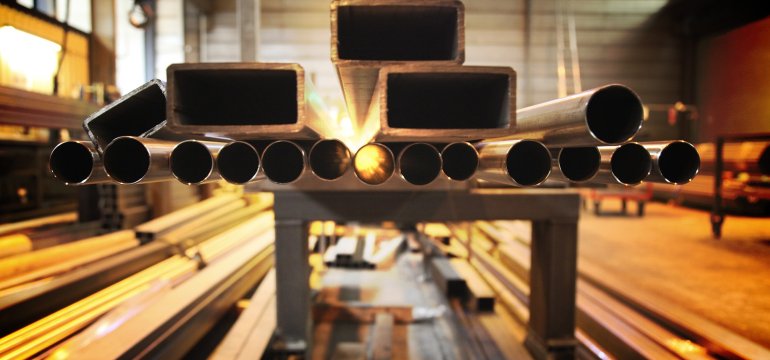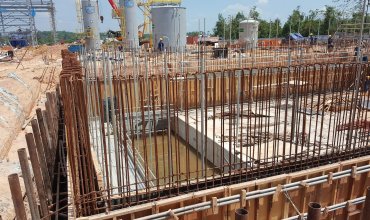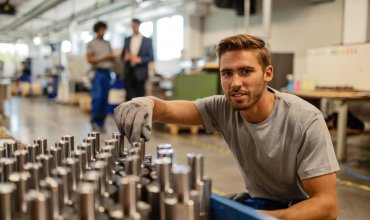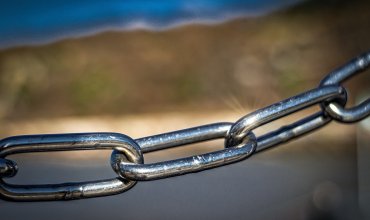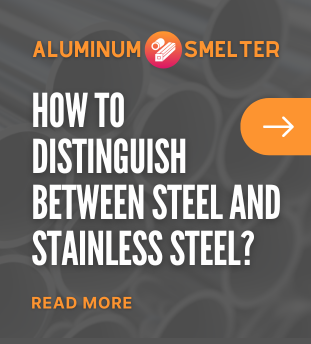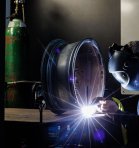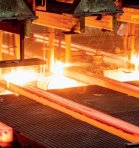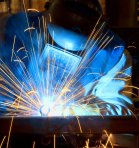Joining steel profiles is one of the most important processes in construction, engineering and many other industries. Welding is one of the most commonly used methods, but joining steel profiles without welding is becoming increasingly popular. The reasons for this are numerous - from time and cost savings, to increased safety and a variety of applications. In this article, we will discuss the various methods of joining steel profiles without welding and explore why more and more companies and professionals in Poland are choosing these techniques. We will consider the advantages and disadvantages of each method and look at the practical applications of each.
Screw fittings - versatility and reliability
Screw connectors are one of the most widely used solutions for joining steel profiles without welding. This method involves the use of bolts and nuts to connect individual steel components.
Advantages of bolted connectors
One of the main advantages of bolted connectors is their versatility. They can be used in a wide variety of applications - from small structures to giant bridges and skyscrapers. In addition, they are easy to disassemble, making them reusable, which is important in terms of ecology and economy.
Bolts and nuts are also readily available and relatively inexpensive, reducing costs compared to more expensive methods such as welding. What's more, the process of assembling bolted joints does not require specialized skills or sophisticated equipment, reducing the risk of errors and failures.
Application in Poland
In Poland, bolted connectors are widely used in construction and industrial applications. In many cases, such as the construction of warehouse halls, stadiums or bridges, the use of screw connectors is practically standard. Wherever speed of assembly and the possibility of later modification of the structure are important, screw connectors are invaluable.
Disadvantages of this method
However, screw connectors are not without disadvantages. The choice of unfavorable weather conditions or a highly corrosive environment can lead to weakening of the joint structure. In addition, they require regular inspection and maintenance to ensure their reliability and longevity over the long term.
Mechanical clamps - a modern approach to joining steel
Mechanical clamp technology is an innovative solution for joining steel sections without welding. Mechanical clamps work by applying mechanical pressure, or clips, to join two steel parts together.
Advantages of mechanical clamps
One of the main advantages of mechanical clamps is their speed of installation. Installing such a connection is much faster than welding, which is important in projects where time plays a key role.
Clamps are also easy to use and do not require sophisticated equipment, which contributes to lower installation costs. They also help minimize the risks associated with working at height, as their installation does not generate sparks or high temperatures.
Examples of applications
Mechanical clamps have found their application in Poland mainly in modular construction and quickly erected structures. They are commonly used in the construction of temporary structures that require quick assembly and disassembly, such as trade fair halls, sizable industrial installations and light utility structures.
Limits and disadvantages
Unfortunately, mechanical clamps have some limitations. They may not be suitable for very heavy loads or in extreme conditions where extremely high holding force is required. The long-term durability of mechanical clamps can also be lower compared to more traditional methods, such as screw fittings.
Industrial adhesives - an innovative approach to joining steel
Industrial adhesives are gaining popularity as a method of joining steel profiles without welding. The use of specialized adhesives makes it possible to permanently join metals without the need for traditional mechanical techniques.
Advantages of industrial adhesives
One of the biggest advantages of industrial adhesives is their ability to bond different types of materials, including different grades of steel. Adhesives also offer an aesthetically pleasing finish, as they do not leave visible marks, which can be undesirable in certain applications.
Industrial adhesives allow for an even distribution of stresses at the bonding points, which can contribute to the strength of the overall structure. The process of applying adhesives is relatively simple and does not require specialized equipment.
Applications in Poland
In Poland, industrial adhesives are mainly used in the automotive industry, the manufacture of household appliances, as well as in the construction of lightweight steel structures. Companies associated with high-tech manufacturing often turn to industrial adhesives for clean and precise joints.
Disadvantages and limitations
However, industrial adhesives have their drawbacks. Long drying times can be a disadvantage in cases where quick installation is required. In addition, industrial adhesives may be less resistant to extreme weather and chemical conditions, which may limit their use in some environments. The cost of purchasing specialized adhesives can also be higher compared to other methods.
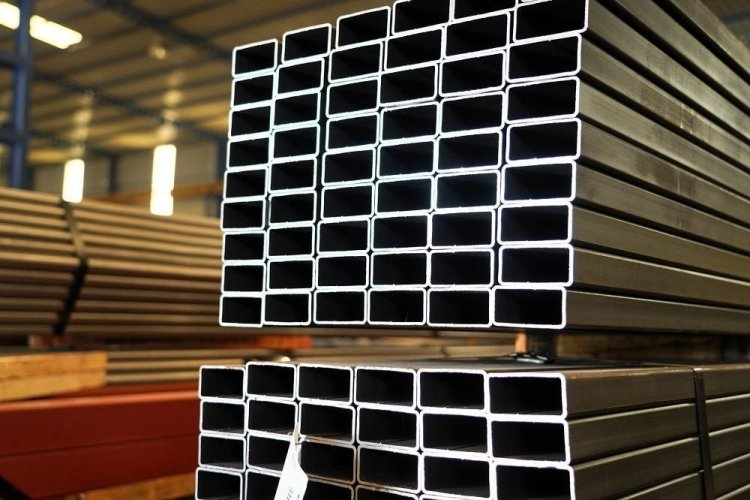
Riveted joints - tradition and modernity
Riveted joints are one of the oldest methods of joining steel profiles without welding, but they are still very popular due to their reliability and durability.
Advantages of riveting
Riveting offers a durable and long-lasting connection that is resistant to temperature changes and weather conditions. Riveting also does not require sophisticated equipment and can be used on site, making it accessible even in harsh conditions.
Riveting is also relatively inexpensive and easy to implement, making it possible to connect large numbers of parts quickly. What's more, riveted connections can be easily disassembled and modified, which is advantageous for structures that require frequent inspection and maintenance.
Application in Poland
In Poland, riveting is widely used in the railroad, aerospace and shipbuilding industries. In these industries, the durability and reliability of connections are crucial, and riveted joints perfectly meet these requirements. Riveting is also common in the construction of historic steel structures, where authenticity and tradition are of great importance.
Limitations of the method
Despite its many advantages, riveting also has its drawbacks. The riveting process can be time-consuming, especially for larger projects. The need to use a large number of rivets can also increase the weight of the structure, which can be problematic in certain applications. Finding the right quality rivets in some cases can also be a challenge.
Structural response pasting techniques - innovations in action
Joining steel sections without welding through structural response pasting techniques is a relatively new method that has been gaining popularity in recent years. This innovative technique relies on the use of specialized composite materials and adhesive compounds to create permanent connections.
Applications and advantages
Structural response bonding techniques are mainly used in the construction industry, especially where aesthetics and the absence of visible mechanical connections are important. In Poland, this method is gaining importance in projects related to the construction of modern architectural buildings and structures requiring high precision and uniform appearance.
The main advantages of this technique are increased resistance to changing weather conditions and lack of corrosion, which ensures the longevity of the connections. In addition, the technique is easy to implement and does not require sophisticated equipment, making it accessible to a wide range of users.
Disadvantages and limitations
The disadvantage of construction response pasting techniques is their cost. Composite materials and specialized adhesive compounds can be more expensive compared to other methods. In addition, the technique requires precise surface preparation and suitable conditions for application, which can be time-consuming and require specialized knowledge.
Examples of application
In practice, these techniques are used in Poland in the construction of bridges, facade structures and modern public buildings. Innovative construction response pasting techniques are also used in renovations and retrofits of existing structures, where aesthetics and authenticity are important.
Summary
Joining steel profiles without welding offers a wide range of methods that can be adapted to different needs and requirements. Bolted connectors, mechanical clamps, industrial adhesives, riveted connections and construction response bonding techniques are just some of the options available. Each of these methods has its own unique advantages and disadvantages, which are worth considering when choosing the right technique for a particular project.
In Poland, more and more professionals and companies are opting for innovative methods of joining steel profiles without welding, recognizing their potential for cost savings, speed of installation and safety. Regardless of the method chosen, the key is to ensure durability, reliability and compliance with technical and environmental requirements, so that each structure is safe and durable for years to come.


